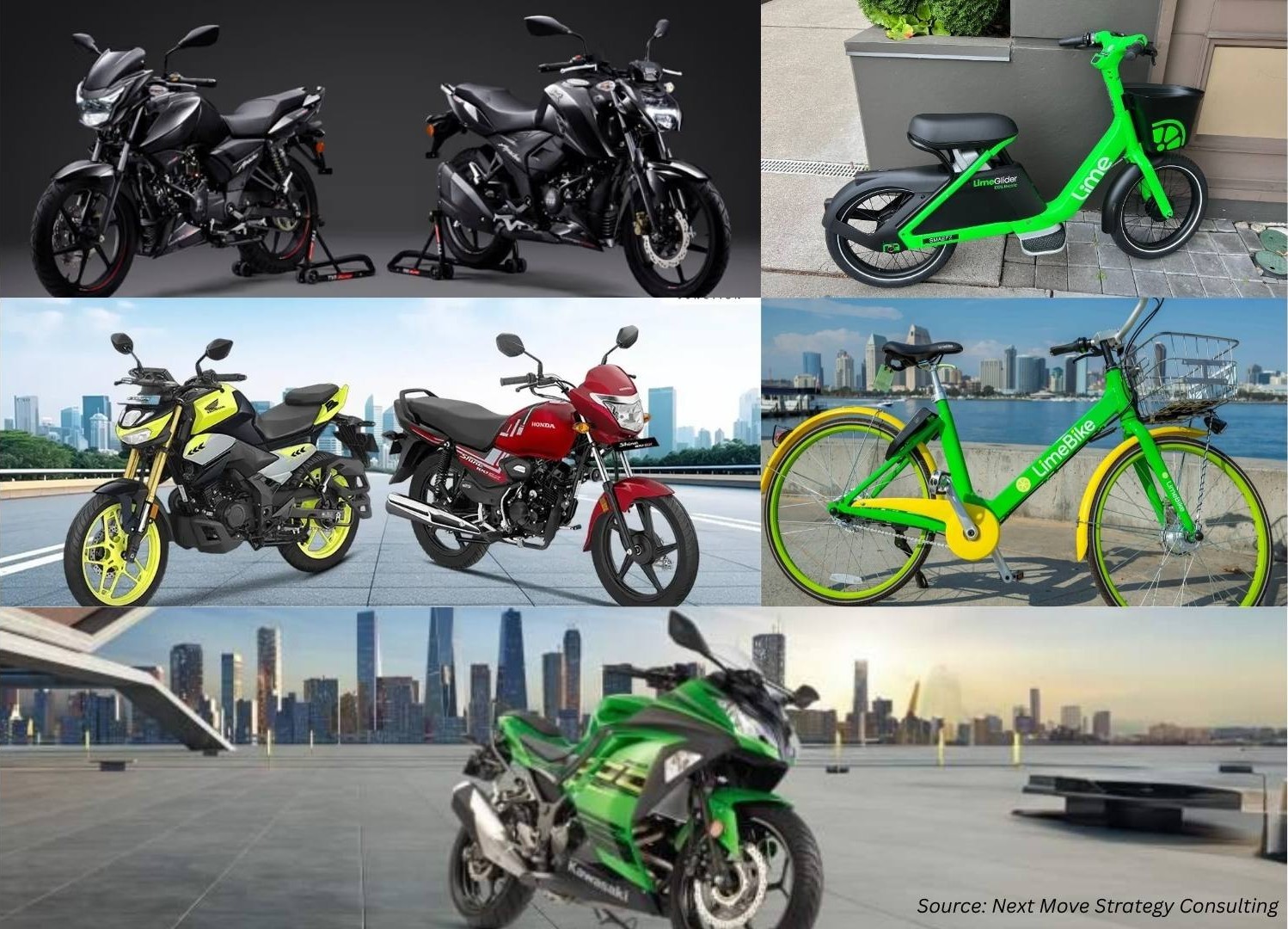
Automotive Virtual Showroom Market by Technology Type (Augmented Reality (AR), Virtual Reality (VR), Mixed Reality (MR), and Others), by Deployment Mode (Access Channel, Hosting), by Vehicle Type (Passenger Cars, Luxury & Premium Cars, Electric Vehicles & Hybrid Vehicles, Light Commercial Vehicles, Heavy Commercial Vehicles, and Others), and by Application (Vehicle Exploration, Vehicle Customization and Others) – Global Opportunity Analysis and Industry Forecast, 2025 – 2030
Industry Outlook
The global Automotive Virtual Showroom Market size was valued at USD 5.70 billion in 2024 and is estimated to reach USD 6.51 billion in 2025 and is predicted to reach USD 12.70 billion by 2030 with a CAGR of 12.5% from 2025-2030.
The market is experiencing strong growth driven by rising global car sales, rapid technological advancements, and increasing disposable income. Automakers and dealerships are leveraging virtual platforms to showcase diverse models, enhance customer engagement, and cater to the growing demand for electric and luxury vehicles.
Advanced 3D graphics, AR, and VR are transforming these showrooms into immersive and interactive experiences, while AI integration is enabling personalized recommendations and streamlined sales processes. However, the sector also faces challenges such as rising cybersecurity risks that threaten platform reliability. Overall, automotive virtual showrooms are emerging as an essential tool in modern automotive retail, reshaping customer experiences worldwide.
Rising Global Car Sales Boost the Market Growth
The rising global car sales are driving the adoption of automotive virtual showrooms market expansion, as prominent dealerships increasingly use these platforms to handle growing inquiries and transactions. Virtual showrooms allow automotive companies to showcase a diverse range of models and configurations to a worldwide audience.
According to the International Energy Agency (IEA), electric car sales topped 17 million worldwide in 2024, growing by over 25% compared to 2023. The additional 3.5 million cars sold in 2024 alone surpassed the total sales in 2020, reflecting a surge in consumer demand that is establishing virtual showrooms as an essential component of the automotive industry.
Technological Advancements in Automotive Virtual Showroom boost the Market Growth
Rapid technological advancements, including sophisticated 3D graphics, augmented reality (AR), and virtual reality (VR), are transforming automotive virtual showrooms industry into highly interactive and realistic platforms. These innovations significantly enhance user engagement by offering immersive product experiences, making virtual showrooms a compelling solution for dealerships and automotive businesses.
For example, in June 2024, Luther Auto introduced a state-of-the-art virtual dealership leveraging VR and Web 3.0 technologies. This platform features virtual showrooms, personalized avatars, and interactive sales consultations, representing a major leap forward in automotive retail and setting new standards for customer experience in the digital space.
Rising Disposable Income Driving Automotive Virtual Showroom Adoption
The automotive virtual showroom market growth is being propelled by increasing disposable income worldwide, as consumers are more willing to invest in high-value purchases, including electric vehicles (EVs) and luxury cars. This trend is boosting demand for digital platforms such as virtual showrooms, which offer an immersive and convenient purchasing experience.
In the United States, the average personal disposable income reached USD 62,722 in 2023, further enhancing consumers’ purchasing power and supporting the adoption of virtual showrooms. As a result, rising disposable income is playing a crucial role in shaping the automotive buying experience and driving the industry expansion.
Rising Cybersecurity Risks Hindering Automotive Virtual Showroom Growth
The industry faces significant challenges due to the increasing frequency of data breaches and cyberattacks in the digital space. For instance, in June 2024, CDK Global, a key software provider for car dealerships, experienced a major cyberattack that forced the company to shut down its systems. Such security risks highlight the urgent need for robust cybersecurity measures to ensure safe and reliable operation of virtual showrooms, which remains a restraint on market demand.
AI Integration Transforming the Automotive Virtual Showroom Experience and Creates Future Opportunity
The adoption of artificial intelligence (AI) presents a significant growth opportunity in the automotive virtual showroom market demand. AI is transforming the automotive sales process by analyzing customer preferences and delivering personalized vehicle recommendations, enhancing the overall buying experience.
For example, Impel AI launched an AI-powered virtual photo booth for automotive retailers and OEMs, enabling dealers to create branded studio-quality vehicle photos and 360-degree walkarounds without costly physical setups. This innovation underscores the potential of AI to drive market expansion and reshape automotive retail.
Market Segmentations and Scope of the Study
The automotive virtual showroom market report is segmented on the basis of technology type, deployment mode, vehicle type, application, and region. On the basis of technology type, the market is divided into augmented reality (AR), virtual reality (VR), mixed reality (MR), cloud-based visualization, artificial intelligence (AI) & machine learning (ML), internet of things (IoT) integration, holographic displays, and digital twin technology. On the basis of deployment mode, the market is categorized into access channel, comprising web-based platforms, mobile apps, dedicated VR headset solutions, and touchscreens, and hosting, which includes cloud-based platforms and on-premise solutions. On the basis of vehicle type, the market is classified into passenger cars, luxury & premium cars, electric & hybrid vehicles, light commercial vehicles (LCVs), heavy commercial vehicles (HCVs), two-wheelers, and specialty vehicles. On the basis of application, the sector is segmented into vehicle exploration, vehicle customization, virtual test drives, staff training & dealer education, and others. The regional breakdown includes North America, Europe, Asia-Pacific, and the Rest of the World (RoW).
Geographical Analysis
North America holds the largest automotive virtual showroom market share and is expected to maintain its dominance throughout the forecast period. The growing adoption of electric vehicles (EVs) in the region is a key driver, as consumers increasingly seek convenient and immersive online experiences to explore the latest models.
According to the International Energy Agency (IEA), EV sales in the United States continued to grow in 2024, although at roughly one-quarter the pace of the previous year. Notably, outside the three major markets, EV sales recorded a near 40% increase, reaching 1.3 million units, approaching the U.S. total of 1.6 million units, reflecting strong consumer demand for digital automotive solutions.
Asia-Pacific is the fastest-growing region in the market, propelled by the rapid adoption of 5G technology, which enhances high-speed connectivity and low-latency experiences. This enables seamless streaming of high-definition content and real-time interactions with dealerships, improving the virtual car-buying experience. According to the Australian Strategic Policy Institute, 5G subscriptions in Southeast Asia accounted for 2.7% of total subscriptions in 2022 and are projected to reach 9.4% by 2028, representing 248% growth over six years. The continuous expansion of 5G infrastructure positions digital car showrooms for significant advancements and greater consumer engagement in the region.
Europe holds a significant automotive virtual showroom industry share, driven by the rapid adoption of electric vehicles, strict environmental regulations, and the strong presence of luxury and premium automotive brands. Countries such as Germany, the UK, and France are increasingly implementing virtual showrooms to provide interactive, personalized experiences, reduce dependency on physical dealerships, and promote sustainability. Technologies like 3D vehicle configurators and VR showrooms are widely adopted, enhancing customer engagement and driving market growth.
The Rest of the World (RoW) segment, comprising Latin America, the Middle East, and Africa, is experiencing moderate growth in the automotive virtual showroom market. In Latin America, countries such as Brazil and Mexico are gradually adopting digital automotive sales platforms, driven by increasing consumer interest in EVs and premium vehicles, though adoption is somewhat limited by uneven digital infrastructure and economic variability.
In the Middle East, markets like the UAE and Saudi Arabia are leveraging virtual showrooms to deliver immersive experiences for luxury car buyers, supported by high internet penetration and strong brand presence. Africa is also exploring virtual showroom solutions, particularly in areas with limited physical dealership networks, as online automotive retailing continues to expand. Collectively, these regions represent emerging opportunities for providers to tap into new markets and diversify their global footprint.
Strategic Innovations Adopted by Key Players
Key players in the automotive virtual showroom industry are driving growth through strategic expansions, innovative platform launches, and OEM collaborations.
-
In April 2025, Spyne.ai appointed Dave Purgason as Head of Business for the US, as Spyne established its US regional headquarters in Dallas, aiming to scale to 4,000 dealership rooftops.
-
In July 2024, OneDealer launched an Automotive Network Management Suite, a toolkit aimed at empowering automotive retail networks.
-
In May 2024, OneDealer announced a collaboration with Škoda Finland, focusing on digitizing dealer network websites and enhancing digital assets across the network.
Key Benefits
-
The report provides quantitative analysis and estimations of the industry from 2025 to 2030, which assists in identifying the prevailing automotive virtual showroom market opportunities.
-
The study comprises a deep-dive analysis of the current and future automotive virtual showroom market trends to depict prevalent investment pockets in the sector.
-
Information related to key drivers, restraints, and opportunities and their impact on the automotive virtual showrooms is provided in the report.
-
Competitive analysis of the players, along with their market share is provided in the report.
-
SWOT analysis and Porters Five Forces model is elaborated in the study.
-
Value chain analysis in the market study provides a clear picture of roles of stakeholders
Automotive Virtual Showroom Market Key Segments
By Technology
-
Augmented Reality
-
Virtual Reality
-
Mixed Reality
-
Cloud-based Visualization
-
Artificial Intelligence & Machine Learning
-
Internet of Things Integration
-
Holographic Displays
-
Digital Twin Technology
By Deployment Mode
-
Access Channel
-
Web-based Platforms
-
Mobile Apps
-
Dedicated VR Headset Solutions
-
Touchscreens
-
-
Hosting
-
Cloud-based Platforms
-
On-premise Solutions
-
By Vehicle Type
-
Passenger Cars
-
Luxury & Premium Cars
-
Electric Vehicles & Hybrid Vehicles
-
Light Commercial Vehicles
-
Heavy Commercial Vehicles
-
Two-wheelers
-
Specialty Vehicles
By Application
-
Vehicle Exploration
-
Vehicle Customization
-
Virtual Test Drives
-
Staff Training & Dealer Education
-
Others
By Region
-
North America
-
The U.S.
-
Canada
-
Mexico
-
-
Europe
-
The UK
-
Germany
-
France
-
Italy
-
Spain
-
Denmark
-
Netherlands
-
Finland
-
Sweden
-
Norway
-
Russia
-
Rest of Europe
-
-
Asia-Pacific
-
China
-
Japan
-
India
-
South Korea
-
Australia
-
Indonesia
-
Singapore
-
Taiwan
-
Thailand
-
Rest of Asia-Pacific
-
-
RoW
-
Latin America
-
Middle East
-
Africa
-
Key Players
-
Onedealer
-
Circle
-
Spyne.ai
-
sensus
-
Zerolight
-
Innoactive
-
Renault
-
WE/AR Studio
-
Meero Austria GmbH
-
Dreamtek Ltd.
-
Autorola Solutions
-
Spark Vision AB
-
ByondXR
Report Scope and Segmentation
|
Parameters |
Details |
|
Market Size in 2025 |
USD 6.51 Billion |
|
Revenue Forecast in 2030 |
USD 12.70 Billion |
|
Growth Rate |
CAGR of 12.5% from 2025 to 2030 |
|
Analysis Period |
2024–2030 |
|
Base Year Considered |
2024 |
|
Forecast Period |
2025–2030 |
|
Market Size Estimation |
Billion (USD) |
|
Growth Factors |
|
|
Countries Covered |
28 |
|
Companies Profiled |
10 |
|
Market Share |
Available for 10 companies |
|
Customization Scope |
Free customization (equivalent up to 80 working hours of analysts) after purchase. Addition or alteration to country, regional, and segment scope. |
|
Pricing and Purchase Options |
Avail customized purchase options to meet your exact research needs. |

















 Speak to Our Analyst
Speak to Our Analyst

























